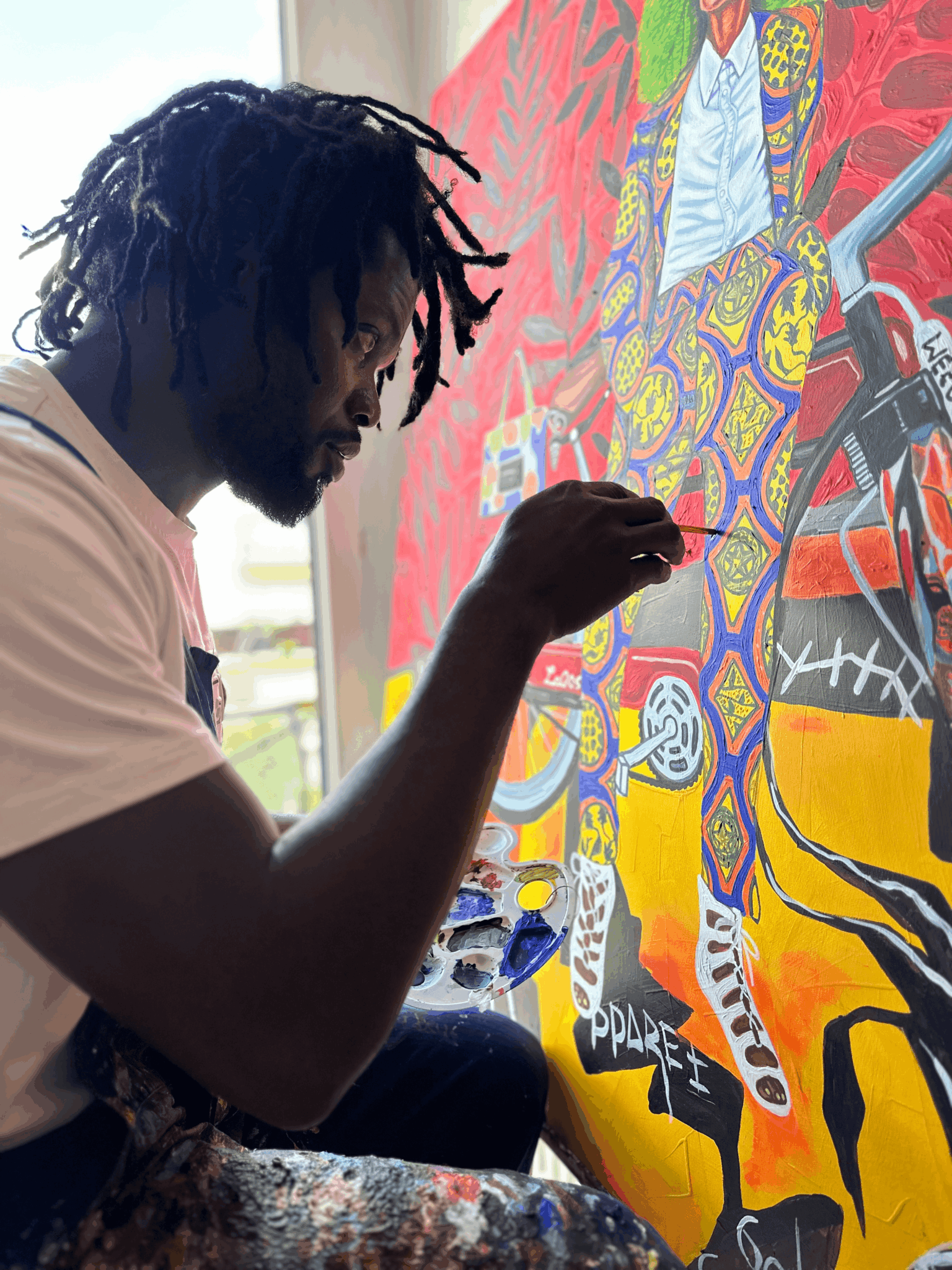Today we’d like to introduce you to Messe À Bidias Rackel
Hi Messe À Bidias, thanks for joining us today. We’d love for you to start by introducing yourself.
Messe à Bidias Rackel was born in 1991 in Bafia, Cameroon. He lives and works in France, near Geneva. Messe started drawing and painting when he was seven, art rapidly becoming his preferred way of expressing his emotions and opinions.Self-taught, he mainly creates large-format acrylic canvases. Favouring figurative effects, his art is neo-expressionist, inspired by contemporary art while anchoring itself in primitive African style. While his artistic work is highly personal, his use of erratic writings and abstract forms, representing ancientAfrican figures and symbols, is sometimes compared to the paintings of Basquiat
Expressing myself through art was a calling and mission : Growing in a socio-political context where opinions are often
censured, my paintings have been a way of building for myself a free world, condemning what I despises
and claiming my aspiration for a peaceful tomorrow. Thanks to the insertion of key words, my paintings deal
with issues such as the dysfunctioning of the political elite or the indoctrination of populations by religious
movements. His art also illustrates the social inequalities authoritarian regimes generate and the great
suffering this creates for street children, people living in slums and for other excluded categories of the
population.
My paintings are a message of hope and a testimony of the beauty that surrounds us, even in the most
challenging environments. Using Florissant colors, l depicts the sapeurs, mystical embodiment of a bustling
Congolese society. Details in my canvas often reproduce patterns of African Wax fabric.
Messe has exhibited his work in Switzerland,France, Belgium, the United States, Cameroon, Nigeria and the Democratic
Republic of Congo. He wants to get his art known on earth as he keeps writing his own legacy.
We all face challenges, but looking back would you describe it as a relatively smooth road?
My intention with my art has always been to reflect my environment in the best light. Initially my works were inspired by the slums I laid my head in and the persons and personalities I crossed paths with but unfortunately a tragic event occurred in 2020 and I was faced with the reality of my morality after surviving a stroke. Although my intentions have yet to stray, proving my unwavering resilience has diverted my inspiration from being on based on my perception of others to one that is focused on healing my inner wounds, that of my own generation, and the traumas suffered by my bloodline in the diaspora. I aim to serve as an example to those who struggle with aligning with their purpose and for my art to serve as a light to those who are both physically and mentally in darkness.
Thanks – so what else should our readers know about your work and what you’re currently focused on?
Am a visual and contemporary artist painter who started drawing and painting at an early age, art rapidly becoming his preferred
way of expressing his emotions and opinions.
Self-taught, he mainly creates large-format acrylic canvases. Favouring figurative effects, his art is
neo-expressionist, inspired by contemporary art while anchoring itself in primitive African style. While
his artistic work is highly personal, his use of abstract forms, representing ancient African figures .
Expressing himself through art was a calling : Growing in a socio-political context where opinions are
often censured, his paintings have been a way of building for myself a free world, condemning what
I despise and claim my aspiration for a peaceful tomorrow. With the insertion of key words,my paintings deal with issues such as the dysfunctioning of the political elite or the indoctrination of
populations by religious movements. My art also illustrates the social inequalities authoritarian
regimes generate and the great suffering this creates for street children, people living in slums and for
other excluded categories of the society
Combining African heritage with artistic movements such as cubism, surrealism and pop art,
his paintings are a message of hope and a testimony of the beauty that surrounds us, even in
the most challenging environments.
Using fluorescent colours, he depicts the African population and its diaspora, attempting to restore their grandeur, beauty and strength, along with their unique style. He places his characters in captivating settings, often reproducing patterns from Wax, a famous African.Details in my canvas often reproduce patterns of African heritage
We’re always looking for the lessons that can be learned in any situation, including tragic ones like the Covid-19 crisis. Are there any lessons you’ve learned that you can share?
You never know how strong you are until being strong is the only option for you to survive
Contact Info:
- Instagram: https://www.instagram.com/messe_bidias?igsh=bGlnaXRoMG90ZWNt&utm_source=qr
- Facebook: https://www.facebook.com/messe.rackel























Image Credits
Messe bidias


